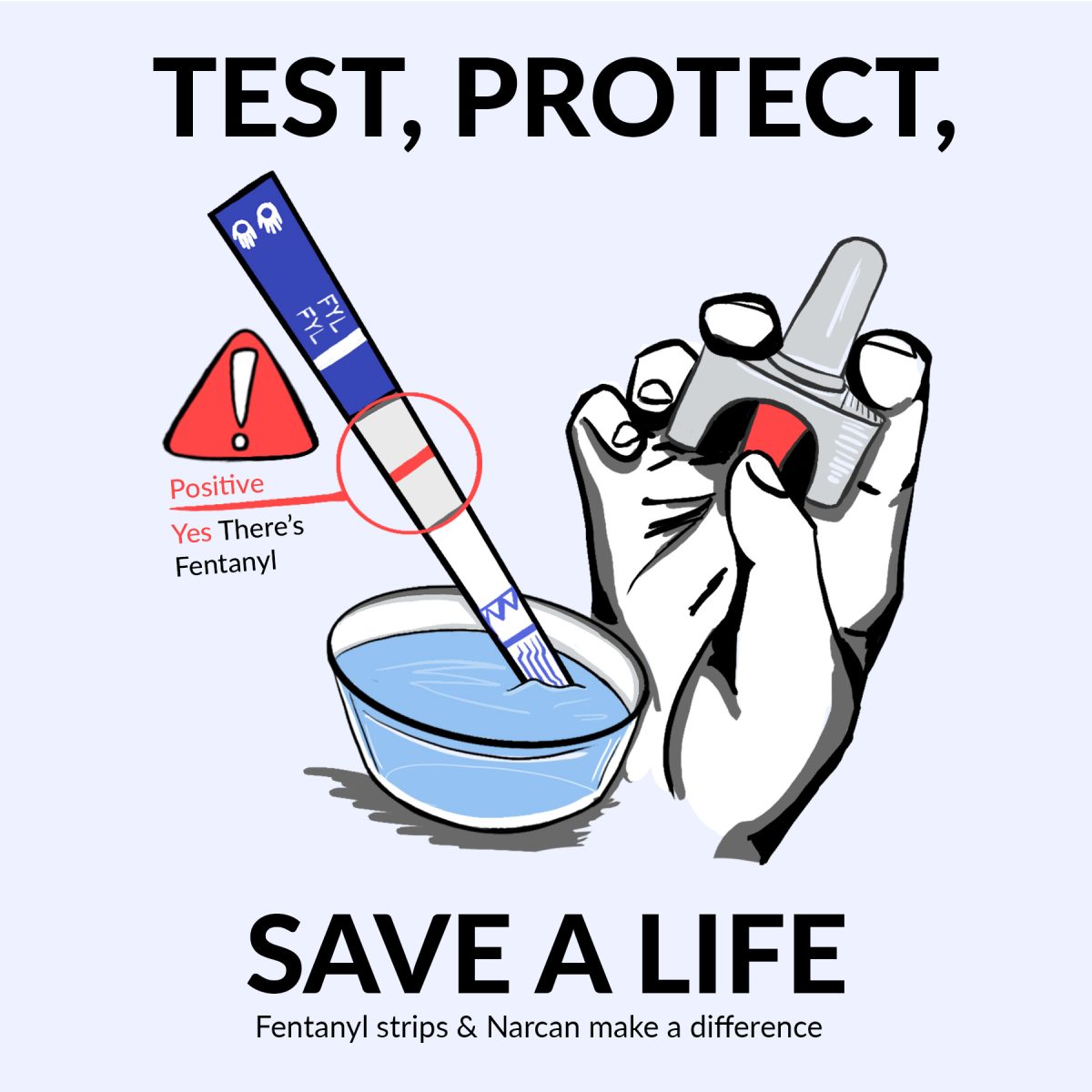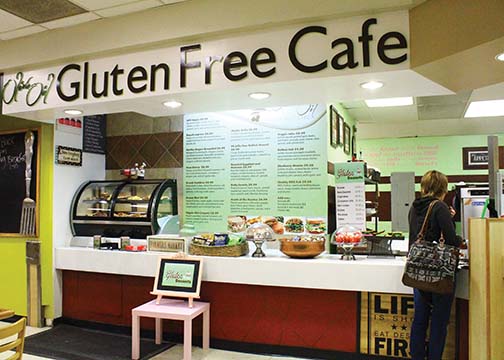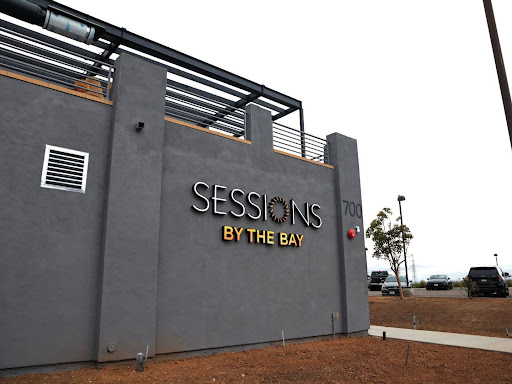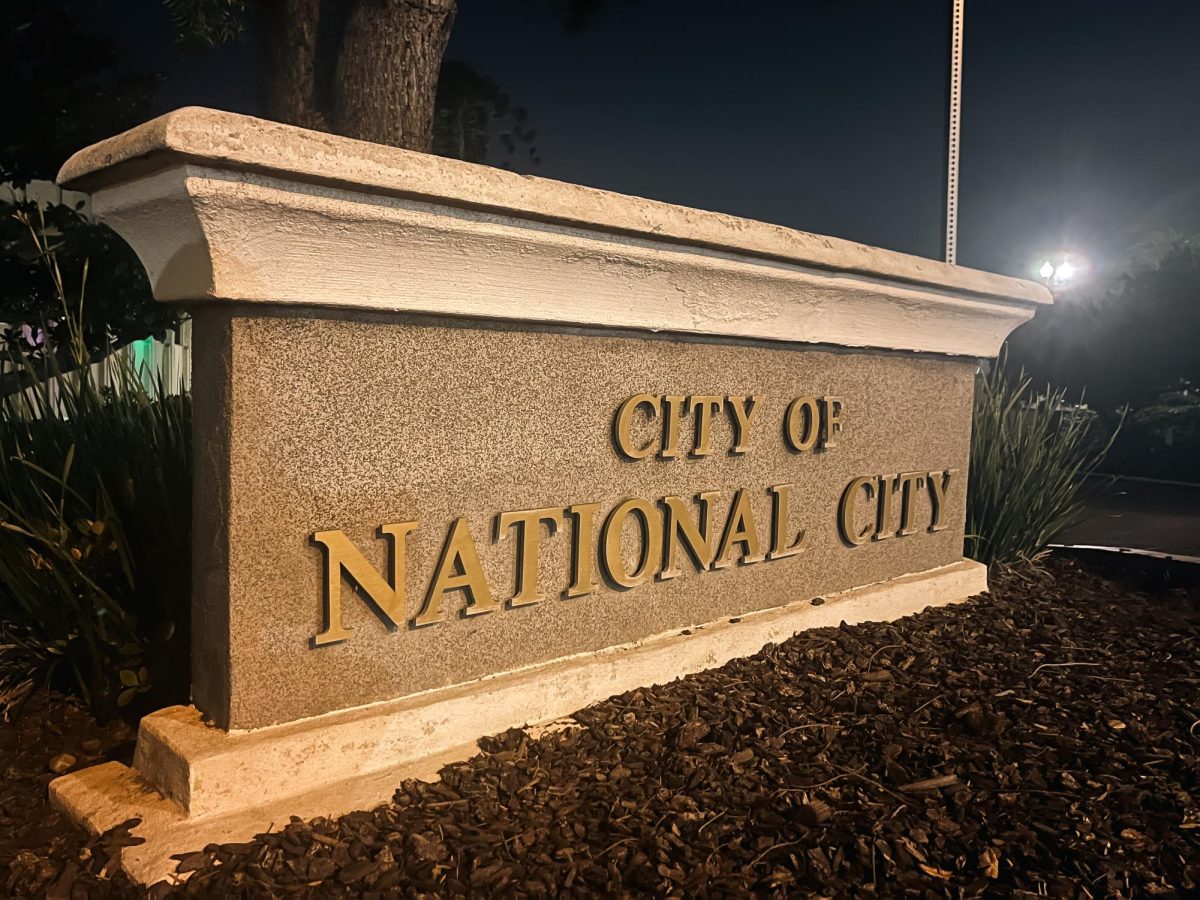Deaths and overdoses related to fentanyl are rising and affecting people from ages 15 to 44 in California. However, recent state legislation is working to increase access to a lifesaving drug on college campuses.
Last year in San Diego, there were 630 opioid overdoses and 550 opioid hospitalizations, both including fentanyl, according to CDHP public awareness section chief, Jessica Hwang. Of the 630 opioid overdoses, 35 deaths were people between the ages of 20 to 24.
Fentanyl is an opioid that is medically used to treat severe pain. It is 50 times more potent than heroin and can be laced with other substances such as pills.
Any amount of fentanyl – even the tiniest dose – can be deadly.
It is a dangerous substance because it is completely odorless, tasteless and sightless, and the only way you would know if you came into contact with fentanyl is by going into an instant overdose.
Some signs of a fentanyl overdose include falling asleep, weak or slow breathing and discolored skin.
In the case of an opioid overdose, Naloxone, sometimes known as Narcan, is a nasal spray that can be used to reverse the overdose effects. Naloxone works to regulate breathing, and it doesn’t harm the person even if an overdose does not occur.
In 2023, the Campus Safety Opioid Act was introduced to bring down the total number of opioid overdoses, in which California college campuses are required to have Naloxone available to students.
Since fentanyl is not instantly recognizable, fentanyl test strips are also available to detect if an item is laced. The strips can reveal the presence of fentanyl but not the amount present.
San Diego State University, in compliance with the Campus Safety Opioid Act, has Naloxone and fentanyl test strips available to students for free.
Test strips can be found in the wellness vending machines and pharmacy at Calpulli Center. Naloxone is available at Calpulli Center, residence hall lobbies, the library’s 24/7 study spaces and the student union.
University Police Department officers also carry Naloxone in the event it is needed.
For students who choose to pick up Naloxone or test strips, no information will be taken to encourage students to have these resources at hand. However, students are asked for their Red ID to make sure the person taking them is an SDSU student.
Naloxone and test strips can also be requested through a survey, which will also give students more information on what to do in an overdose situation.
While no specific numbers are available, Libby Skiles, executive director of Student Health Services, confirmed Narcan has been used on campus by first responders.
“It is a very traumatizing experience for all those involved,” Skiles said. “We don’t often think it can happen to us or that it’s not in the substances we take, but it can. I strongly encourage students who choose to use illicit substances and those who don’t engage in them to use these resources because it could be a friend that may need it.”
Fourth-year student, Amren Purewal, founded SDSU’s chapter of End Overdose. After having an uncle die from an overdose, Purewal was determined to help educate students.
“I heard about [the program] from a friend who went to UCLA and thought, ‘Why can’t we do it here?’” Purewal said.
The chapter helps to prepare students on how to respond to an overdose through frequent tabling on Campanile Walkway and presenting at Greek Life chapter meetings.
For students who wish to pick up Naloxone kits, the organization will not collect any student information. Any student can receive free training by visiting their table and attending their events. However, a release of liability form must be filled out after receiving training.
“We make it as easy as possible for [students] to [access resources] because when you put it in front of them, it makes it easier for students to come instead of facing the stigma of going to Calpulli. Student-to-student is the best way to do that,” Purewal stated.
Students interested in joining the chapter or attending meetings can visit their Instagram for updates.
“Overdose is the number one cause of death for people ages 18 to 45. SDSU has dealt with a lot of overdoses in the past couple of years. Being equipped and well-trained is the number one way to end it. Take the time to learn, no one else has to die. It’s so easy to recognize and save a life,” Purewal emphasized.











